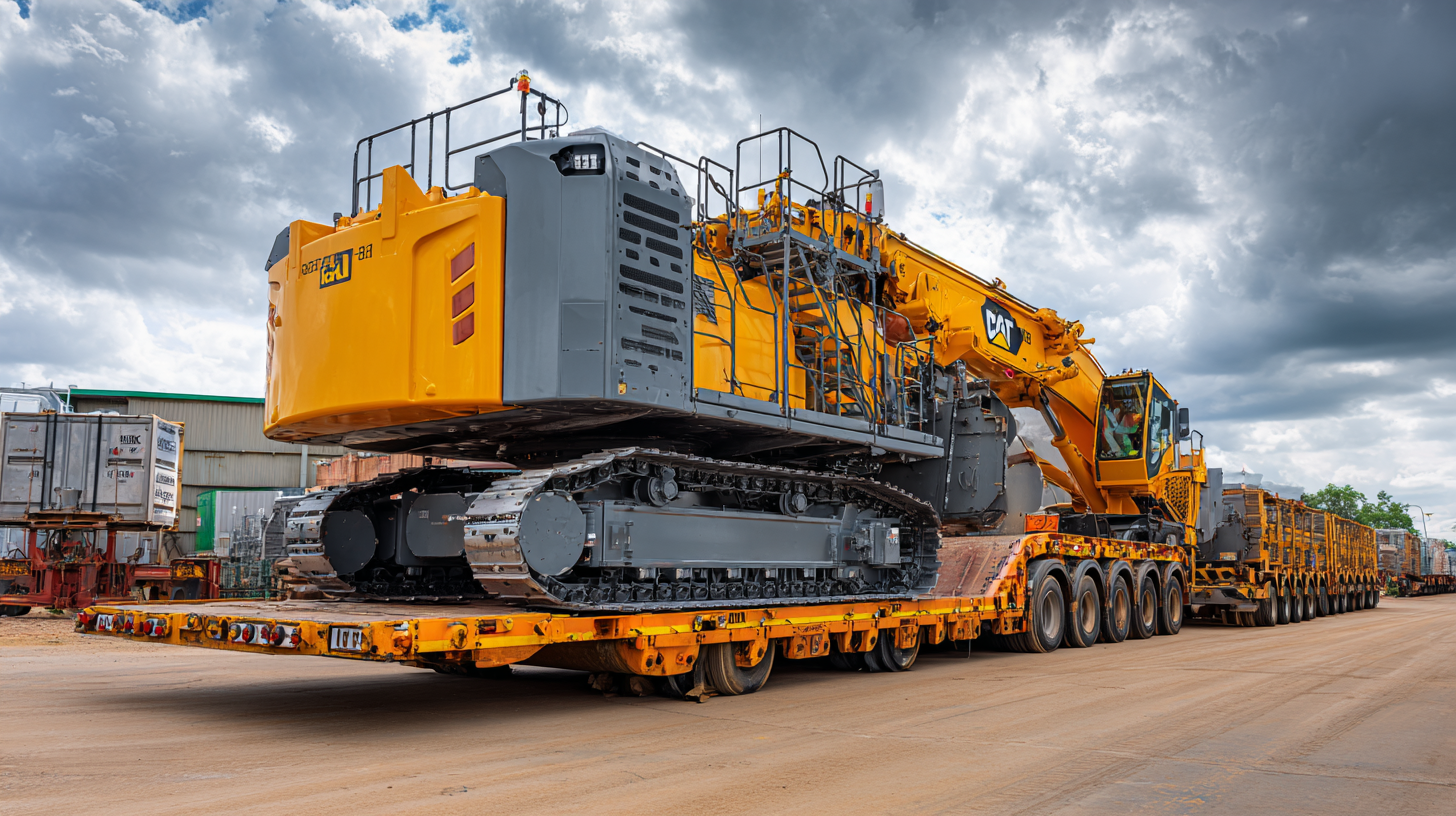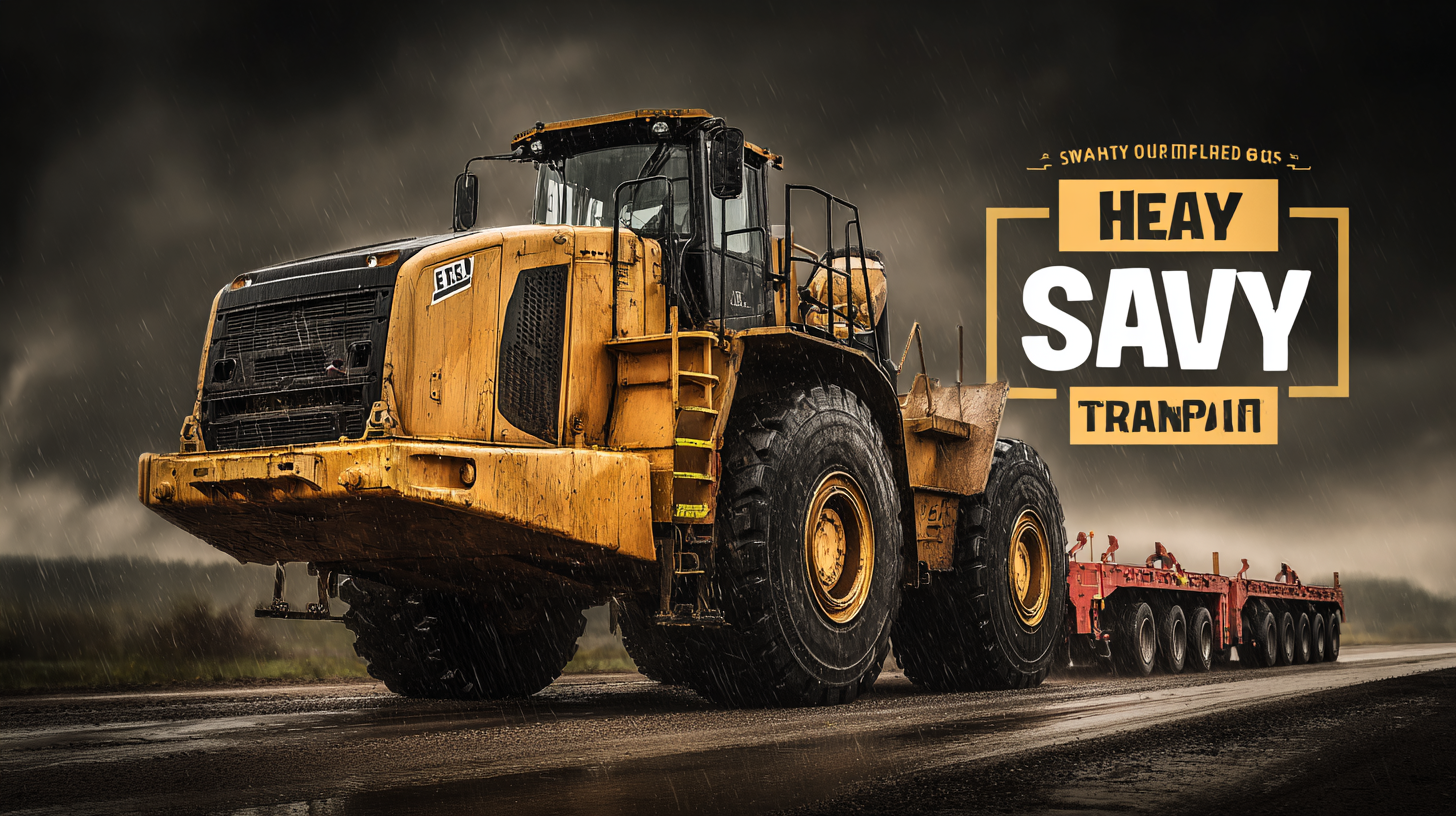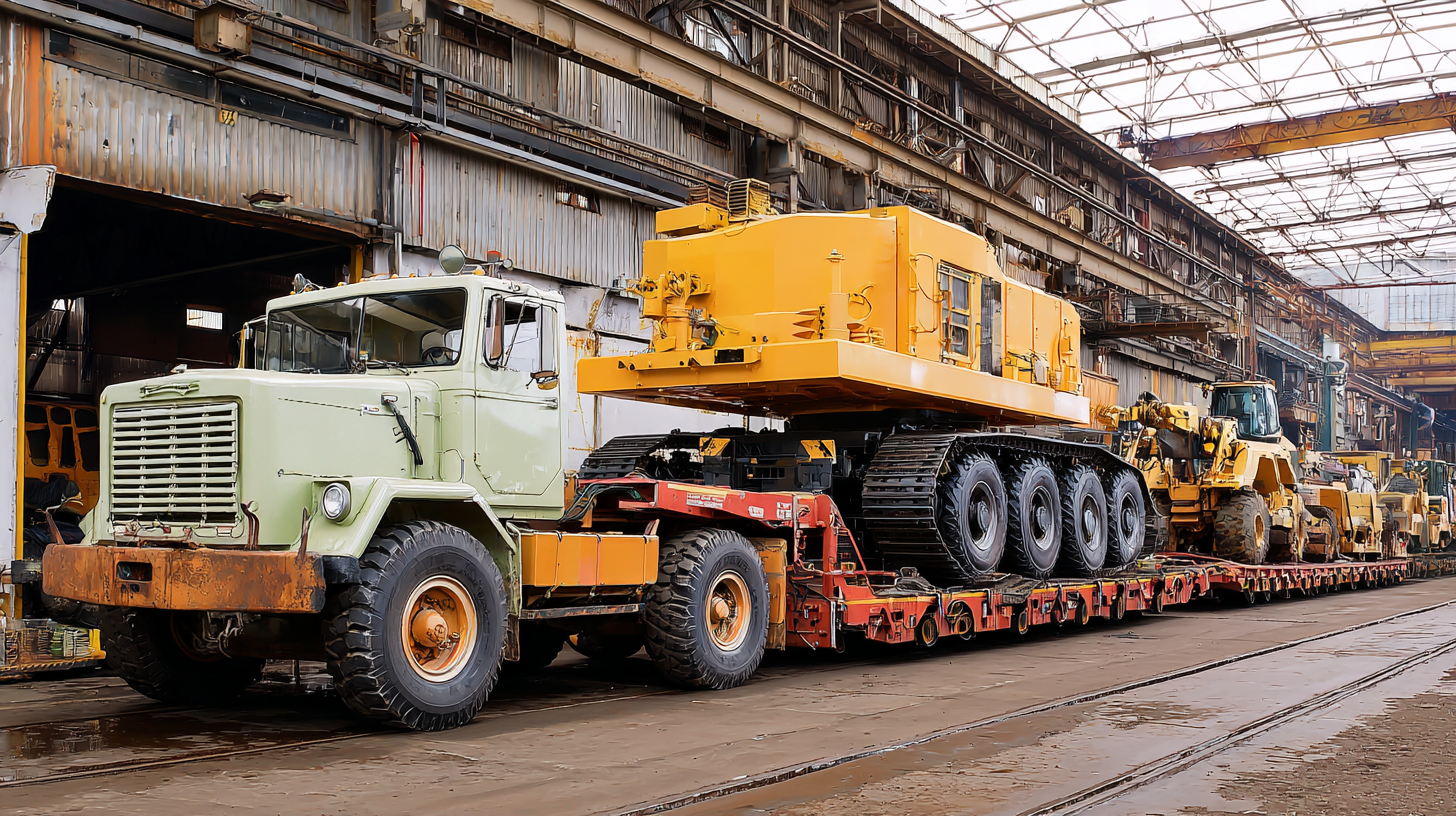Leave Your Message
- Phone
- E-mail
- Whatsapp
In the world of construction and industrial projects, the efficient and safe Heavy Machinery Transport is paramount to success. According to a report by MarketsandMarkets, the global heavy equipment transport market is projected to reach USD 15 billion by 2025, demonstrating the increasing demand for specialized transport solutions. With heavy machinery, such as excavators, cranes, and bulldozers, often weighing several tons, adhering to industry standards is essential to minimize risk and ensure compliance with regulations.

The intricacies of transporting such colossal machinery require a comprehensive understanding of logistics, equipment readiness, and route planning. This guide aims to explore best practices, industry standards, and innovative strategies that can enhance Heavy Machinery Transport operations, ultimately contributing to project efficiency and safety in an ever-evolving industrial landscape.
In today's logistics landscape, understanding the key characteristics of heavy machinery transport solutions is paramount for businesses aiming to optimize their operations. Heavy machinery transportation is not just about moving large, out-of-gauge items; it involves navigating complex logistics processes to ensure the safety and integrity of high-value and critical cargo. According to recent market analysis, the global logistics market is projected to grow from USD 70.94 billion in 2023 to USD 187.45 billion by 2032, highlighting the increasing demand for specialized transport solutions that cater to heavy machinery.
Sophisticated logistics hubs are emerging, exemplified by locations that are strategically positioned to serve major industry players. For instance, regions like Lehigh Valley are becoming logistics bases for large corporations and third-party logistics providers, enhancing their ability to manage oversized cargo effectively. The importance of integrating IoT technologies in transport solutions also cannot be understated, as these advancements help facilitate real-time tracking and improved operational efficiency, ensuring these heavy loads reach their destinations safely and on time. Companies that leverage these characteristics in their logistics will be better equipped to meet the challenges of transporting heavy machinery in an increasingly competitive marketplace.
When it comes to transporting heavy machinery, understanding the diverse categories and their specific transport requirements is essential. Different types of heavy machinery, such as excavators, bulldozers, and cranes, have unique dimensions and weight distributions that affect how they should be loaded and secured for transit. According to a report by the American Transportation Research Institute (ATRI), improper loading and lack of securement can lead to a 30% increase in accident rates during transport, highlighting the necessity for proper guidelines.

Tip: Always check the manufacturer's specifications for load limits and dimensions before planning transportation. Using specialized heavy machinery trailers equipped with appropriate tools can significantly reduce risk and enhance safety during transport.
Moreover, the transport needs of machinery often include careful consideration of state and federal regulations regarding weight limits, permits, and routes. For instance, oversized loads often require escorts and must adhere to specific travel timings. Data from the Federal Highway Administration indicates that 25% of heavy haul operations encounter delays due to permit issues, emphasizing the importance of thorough pre-planning.
Tip: Utilizing technology like route planning software can help avoid obstacles and ensure compliance with legal requirements, streamlining the transport process for heavy machinery.
Heavy equipment hauling is a critical aspect of various industries, necessitating adherence to industry standards to ensure secure and efficient transport. According to a recent report by the Construction Equipment Association, improper transportation can lead to an 80% increase in equipment damage. It's crucial to prioritize safety and efficiency in logistics practices, particularly considering the guidelines issued by the Ministry of Industry and Information Technology, which emphasize optimizing equipment production efficiency by 2027.
When selecting transport solutions, understanding the specific requirements of heavy machinery is essential. Always ensure that the hauling service complies with local regulations and standards, as non-compliance can result in heavy fines and delays. Tip 1: Inspect the transport vehicle for safety equipment and ensure it is properly maintained. Tip 2: Employ qualified personnel who are trained in securing heavy machinery loads, as this minimizes the risk of accidents during transport.
Furthermore, leveraging technology in tracking and monitoring shipments can greatly enhance the efficiency of heavy equipment hauling. A recent survey indicated that companies utilizing advanced logistics software saw a 25% improvement in delivery times. Tip 3: Invest in GPS tracking systems to monitor the transport process in real-time, ensuring timely delivery and enhanced accountability.
When it comes to transporting heavy machinery, compliance with regulations is key to ensuring
safety and efficiency. The Federal Motor Carrier Safety Administration
(FMCSA) outlines specific guidelines that transporters must follow, including securing loads properly and adhering to
weight limits to prevent accidents. According to a report by the
American Rental Association, improper transport practices can lead to up to 75% of machinery damage during transit,
emphasizing the necessity for best practices in this sector.
To streamline compliance, operators should stay informed about the specific regulations pertaining to their equipment and transport routes.
This includes understanding the need for permits for oversized loads, which can vary significantly by state. The
National Association of Small Trucking Companies indicates that nearly 30% of truck operators fail to obtain
the required permits, resulting in significant fines and project delays. Implementing checklists and regular training for drivers
can greatly enhance adherence to these vital regulations, minimizing risks and ensuring the machinery arrives safely at its destination.

When considering heavy machinery transport solutions, evaluating cost-effectiveness across various alternatives is crucial for maximizing returns on investment. According to the American Rental Association's 2022 report, the average transportation costs for heavy equipment can account for nearly 20% of the overall rental expenses. This underscores the importance of analyzing different modes of transport, such as flatbed trucks, lowboys, and specialized trailers, to determine which option aligns best with the project budget and timeline.
Moreover, a recent study from the Association of Equipment Manufacturers highlights that utilizing rail transport can reduce costs by up to 25% for long-distance shipments compared to traditional trucking. However, businesses must weigh these savings against potential delays and logistical complexities associated with rail freight. Ultimately, making informed transport decisions hinges on a thorough understanding of both the immediate expenses and the long-term implications on project efficiency, ensuring that companies not only save costs but also maintain operational fluidity.
| Transport Method | Average Cost ($) | Time Efficiency (Days) | Environmental Impact (CO2 Emissions kg) | Reliability Rating (1-5) |
|---|---|---|---|---|
| Flatbed Trucking | 2000 | 3 | 150 | 4 |
| Heavy Haul Trucking | 3500 | 4 | 250 | 5 |
| Rail Transport | 3000 | 5 | 100 | 5 |
| Barge Transport | 4000 | 7 | 300 | 3 |
| Air Freight | 8000 | 1 | 50 | 4 |
